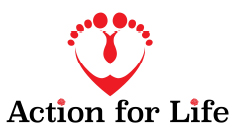Last week, Jessica Valenti, the abortion lobby’s most tireless apologist, published an article in her Abortion Every Day blog that shamelessly attacked adoptions. “Are Maternity Homes Back?” is an unhinged rant by Gretchen Sisson in a piece that cloaks itself in historical concern but functions as a hit job on maternity homes, adoption, and any woman who dares to choose life outside the boundaries set by the abortion industry.
Sisson does not report; she indicts, and her goal is clear: drag every pro-life support system into the shadows and make sure abortion remains the only visible path for women in crisis. She paints maternity homes as throwbacks to an era of shame and secrecy, ignoring that today’s homes offer safety, stability, and support that many states refuse to provide. She calls adoption coercive, not because women lack choices, but because they dare to choose something the abortion industry cannot profit from. Her framing reduces brave birth mothers to victims and casts adoption workers as villains. She doesn’t want reform. She wants to erase the alternative.
Click here to sign up for pro-life news alerts from LifeNews.com
Sisson writes as if adoption were a racket and maternity homes were sanctuaries of shame, and she insists that she wants readers to see only victims and villains, never volunteers or acts of love, charity, and kindness. The women who step through the doors of a maternity home are not ghosts from the baby‑scoop era. They are mothers who need a roof, a counselor, a chance to breathe. They come of their own will, looking for stability and a future for their children, and they are not hidden. They are helped.
The old abuses were real—coerced adoptions and sealed records scarred lives. But Sisson twists that painful history into a permanent indictment. She claims modern adoption agencies “traffic” in children and that pro-life workers “prey” on the poor. She points to bad actors and insists they represent the whole. That claim fits her politics, but it does not fit the facts. Oversight, counseling, open adoptions, and legal reforms have transformed the process. Thousands of women each year choose adoption freely and find peace in it. Sisson ignores them because their stories expose the weakness and dankness of her crusade.
Her argument also serves someone else’s pocketbook. When adoption looks like exploitation and maternity homes look like traps, abortion starts to look like rescue. That illusion fills the bank accounts of abortion providers. They profit when a frightened woman believes life means misery. They depend on despair. So, Sisson and Valenti work to make sure adoption carries stigma and fear, not hope. They attack every organization that shelters women, every agency that helps a mother choose life, every voice that says you can carry your child and still have a future.
Sisson calls maternity homes “residential crisis pregnancy centers,” as if that were a curse. In reality, they provide the social safety net she pretends to want: beds, food, medical care, education, and community. They meet women where the state has failed them. They are lifelines, and to call them coercive is to slander the women who run them and the mothers who rely on them.
She mistakenly insists that the pro-life movement wants adoption to replace abortion as a political talking point. That is such a lie. The movement wants something simpler and more radical: for every mother to have the help she needs to choose life and for every child to have the chance to be loved, whether by birth parents or adoptive ones. Adoption is not the “common ground” she mocks. It is the common good she refuses to see.
If Sisson cared about women, she would demand real reform—legal aid for birth mothers, better oversight of agencies, and public funding for prenatal and housing support. Instead, she paints every pro-life resource as a trap. She writes to inflame, not inform, and she writes to keep abortion the only visible exit.
We will not let her rewrite the moral map. Maternity homes save lives, and adoption builds families. The women who choose these paths act out of love and strength, not weakness. They deserve honor, not suspicion. Sisson’s article serves the abortion industry’s bottom line, not the truth. And Valenti’s platform exists to make sure that when a woman reaches for help, all she sees is the clinic door and a place to swipe her credit card.
Women deserve better than that. Children deserve better than that. And the truth deserves to be louder than their lies.
LifeNews.com Note: Raimundo Rojas is the Outreach Director for the National Right to Life Committee. He is a former president of Florida Right to Life and has presented the pro-life message to millions in Spanish-language media outlets. He represents NRLC at the United Nations as an NGO. Rojas was born in Santiago de las Vegas, Havana, Cuba and he and his family escaped to the United States in 1968.






